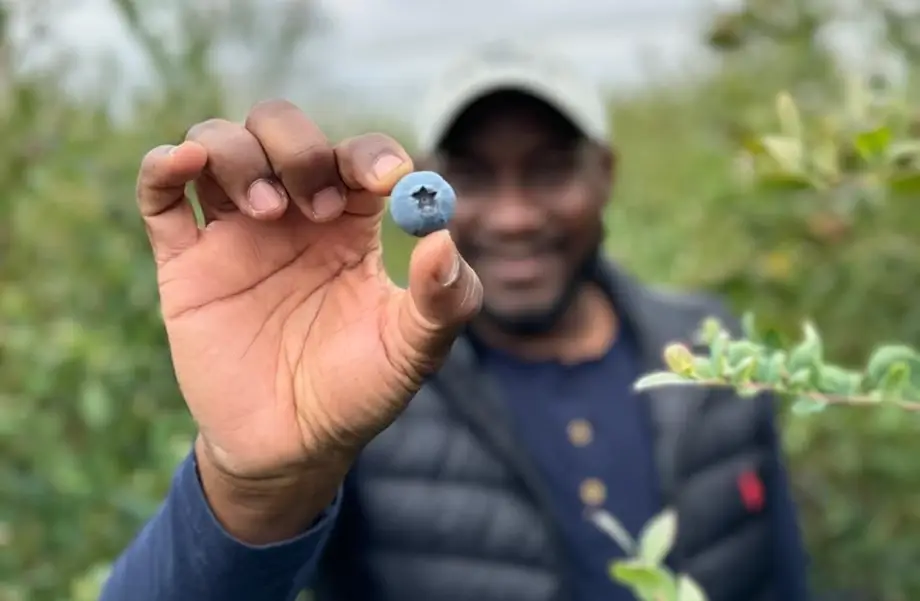You might ask yourself this question every spring when strawberries start to pile up at the grocery shop and their price starts to drop: "What do I do if some strawberries have mould?"Well, we have the answers! Read on to find out what to do about mouldy strawberries and tips on how to pick the freshest berries possible.
Strawberries are one of the first berries to appear in shops and farmers' markets in spring, and these red, juicy fruits are the joy of summer fruit.
So there is nothing more disappointing than going to eat your berries only to discover mould. It is tempting to wash or cut off the mouldy parts and consume the rest. But is it safe?
CAN YOU EAT STRAWBERRIES WITH MOULD?
If you find white fluffy stuff on your berries that looks a bit like candy floss, it is mould. Mould is a fungus with spores that feed on the berries and grow fine threads that can look like fluff or cotton. This particular type of mould is common among fruits and is known as Botrytis cinerea (fruit rot or grey mould).

While mouldy strawberries are unlikely to hurt you, they can make you sick if you are allergic to moulds in general. And because berries are a soft-fleshed food, unlike apples or pears, it is not safe to simply cut off the mouldy part, as spores have probably entered the berry flesh. If a berry is bruised, but shows no signs of mould, the bruised part can be cut away. A mouldy strawberry should be thrown away.
If you happen to accidentally eat a mouldy strawberry, you'll notice because, usually, mouldy strawberries taste a bit sour and acidic and can remind you of aged cheese. The off flavour is nature's red flag that your red berries are bad, if you've missed the visual mould. A small amount of this mould is unlikely to make you ill. If you've eaten a larger amount, you may have some signs of gastric distress similar to mild food poisoning, but it should resolve itself, and it's not toxic or particularly dangerous, just uncomfortable.
WHAT HAPPENS IF ONLY ONE STRAWBERRY IS MOULDY?
If you open a container and discover what looks like a mouldy berry but the rest seems fine, discard that berry and all the berries in direct contact with it, and then wash the rest thoroughly before eating. If you have a couple of mouldy berries in your container and you have removed all the berries in direct contact with them, you can make a solution of water plus white vinegar to wash the berries. Vinegar kills mould, which is the same reason why you should use a vinegar and water solution to clean your humidifier. Use one part white vinegar (so as not to pickle the strawberries) to four parts water and soak the berries for five minutes before rinsing well, drying and storing. If more than a quarter of the berries in a container are mouldy, throw them away.
HOW TO CHOOSE THE FRESHEST STRAWBERRIES
To avoid the problem of mould, for a start, choose the freshest berries possible. Berries bought at a farmers' market are likely to be fresher than those at your local grocery shop.
Check the expiry dates on consumer packs and look for the earliest dates. Check packages for signs of juice or moisture, which may indicate that the berries on the bottom may have been crushed, as damaged berries are more likely to rot and mould.
Choose bright red, shiny berries, without a dull appearance and with the seeds indented into the flesh. They should smell fragrant and sweet. Look for obvious signs of mould at the bottom of the container. You can ask the farmers' market to transfer your berries from the carton into a bag so that you can see if there is any mould underneath.
At the greengrocer's, you can ask them to transfer the berries into a bag to make sure they are all fresh, and then have the bag put back into the original container to check out. If you find mouldy berries on the supermarket shelves, bring this to the attention of someone in the fruit and vegetable department and ask them to help you find another package that is not mouldy. Don't open and handle several packages to create your perfect box of berries.
CONCLUSIONS
Strawberries shouldn't be a source of fear, but when it comes to mould on these delicate fruits, be sure to err on the side of caution. Quickly remove and discard any ber ries that are mouldy or touching mouldy berries, wash the rest thoroughly and dry them before storing to prevent new mould. And if more than a quarter of the berries in your container are mouldy, discard the whole batch. If your berries were bought at a grocery shop and you discover mould the same day, return them to the shop, which should give you a refund or replacement.
Source: Eating Well
Source: Gerald Holmes, Strawberry Center, Cal Poly San Luis Obispo, Bugwood.org









